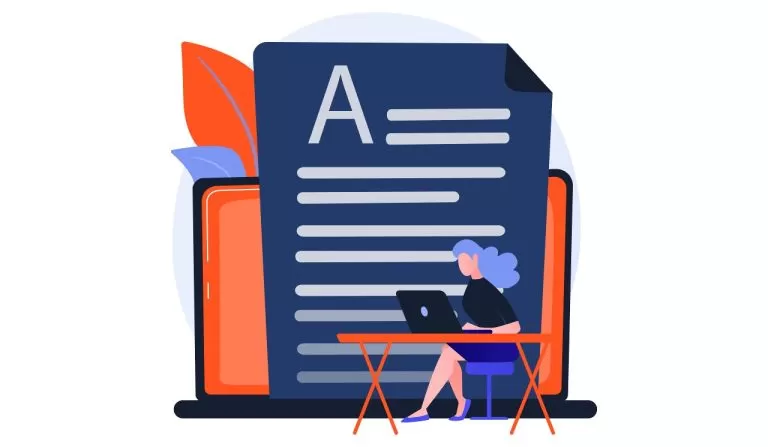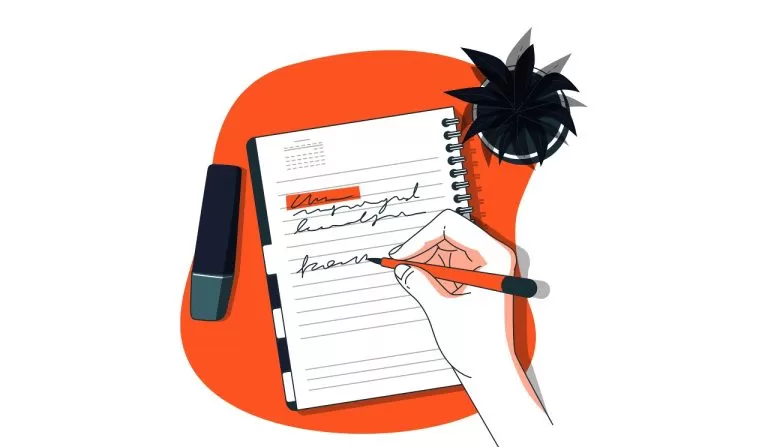Upholding integrity is critical to creating a fair and reasonable learning environment. Learners need to understand and follow a Code of Conduct that controls their conduct, especially when it comes to assignment submissions. This blog will highlight the importance of academic integrity as well as provide tips for avoiding plagiarism and using AI-assisted content in assignments
Understanding Academic Integrity
Academic integrity is the foundation of a learner’s educational journey. It includes being truthful, accountable, and acting morally in all aspects of education. Learners who uphold academic integrity foster a climate of mutual respect and trust among the academic community.

What is Plagiarism?
Plagiarism is defined as the act of misrepresenting someone else’s work, ideas, or intellectual property as your own without proper credit. Plagiarism is seen as a major ethical and academic transgression that can have severe consequences, including loss of credibility, academic repercussions, and in certain situations, severe penalties.
Examples include, but are not limited to:
- Copying and pasting text from a source without providing proper citation or quotation marks.
For instance:
Original: “The industrial revolution marked a significant shift in global economic structures.” (John et.al, 2020)
Plagiarised: The industrial revolution marked a significant shift in global economic structures. Using someone else’s work without giving credit to them. - Rewriting/Rephrasing someone else’s ideas or text in your own words without giving credit to the original source.
For instance:
Original: “According to Shawn Mendez’s article in the Global Report on Environment, the impact of climate change on biodiversity is a growing concern for scientists.”
Plagiarised: Scientists are increasingly worried about the impact of climate change on biodiversity.
- Inventing or exaggerating sources to support your own ideas or arguments.
For instance:
According to Dr. John Doe in his groundbreaking research on … (where Dr. John Doe might not be an author of any research and just to support your work, you invented this unauthentic source)
- Presenting another person’s work as your own.
- Submitting your own previously submitted/published work without proper citation or permission.
The Code of Conduct
Originality Matters
Acknowledge the worth of original work. Assignments allow you to understand and demonstrate your grasp and application of the learnt concepts.
Avoid copying directly from sources without sufficiently citing them. Plagiarism, even if unintentional, is a significant breach of academic integrity.

Cite Your Sources
Always include proper citations when using external sources, whether they are textbooks, papers, or online information. This includes in-text citations as well as a detailed bibliography or reference list.
Avoiding AI-assisted Content
While technology is extremely helpful, using AI tools to generate or complete assignments raises ethical concerns. Using AI to write or adding creativity to your work may speed up the process and help you skip the pains of thinking and searching your way out. However, excessive usage of artificial content will leave a big question mark on your work competence, and on the credibility of your skills and knowledge. It is important for your work to demonstrate your own comprehension and efforts. Therefore, before you employ AI tools for your assignments, make sure you comply with your Centre’s policies and procedures around Academic Misconduct and AI-Usage.

Use Quotation Marks
When directly quoting a source, use quotation marks and provide a citation. They serve as a testament to thorough research, enriching the content and establishing the author’s engagement with relevant literature. Properly cited quotations also contribute to transparency, giving due credit to original ideas.

Paraphrase with Caution
It is essential to rephrase the text using your own words and to include an appropriate citation, even when you are paraphrasing. The work is not yours simply because you changed a few words here and there. Not only does effective paraphrase exhibit comprehension, but it also demonstrates the capacity to articulate concepts without repeating the source text.

Assignment Submission Protocols
Submission Guidelines
Follow the specific guidelines provided by your instructor for each assignment. This includes submission in the required template, formatting, and any other requirements.

Digital Platforms and Formats
For making submissions, use LMS/VLE only. Ensure that all assignments are submitted in a Word format. Other attachments should also preferably be in Word format, however, in a few cases, formats like PDF, etc. could also be acceptable.
Honesty Declarations
Each assignment includes a declaration of honesty, affirming that the work submitted is entirely your own. Take this seriously and sign it truthfully.
Tips for Avoiding Plagiarism and Ensuring Originality
Start Early
Start working on your assignments well in advance to prevent rushing about at the last minute, which can result in unintentional plagiarism. Lack of time does not leave much space to edit and revise your work, causing your work to have a lot of copied content and wrongful references.

Use Plagiarism Detection Tools
Use plagiarism detection software and tools on your assignment to find and fix any accidental plagiarism. They offer an active means of upholding ethical writing standards by cross-referencing documents with online resources.
Take Clear Notes
As cliché as it may sound, notetaking is as important and relevant today as it was in any other time in history. So, make sure to keep detailed notes of your research as it will make easier to distinguish between your ideas and the borrowed content and it will save your time and effort of going back and forth to find researches.
Consult with Instructors/Tutor
If you are unsure about citation methods or the use of certain sources, the best way out of this to seek guidance from your instructors.
Conclusion
Upholding integrity and following the assignment submission guidelines and code of conduct are essential to achieving academic success. Learners must endure that their work is an authentic representation of their knowledge and effort by being aware of the consequences of plagiarism and using AI tools appropriately. Learners can contribute to a culture of academic integrity by abiding by assignment submission guidelines and the Code of Conduct. The educational process is compromised by plagiarism and the improper use of AI tools also disintegrates the value of your educational experience.
Keep in mind that when your expertise and abilities are completely your own, they are more valuable. Maintaining academic integrity not only helps you but also makes sure that all learners are treated fairly and with respect. After all, learning is a journey, and the steps you take along the way are equally important as much as reaching the destination.


